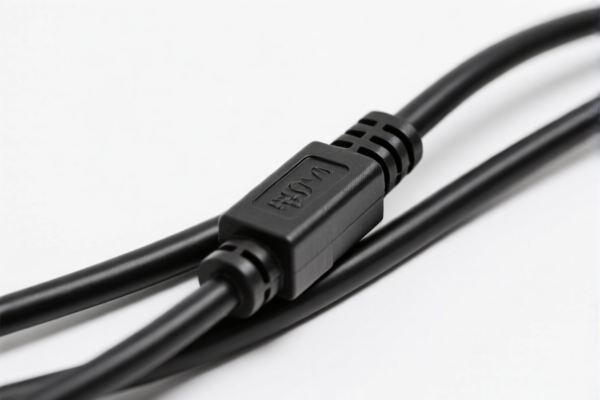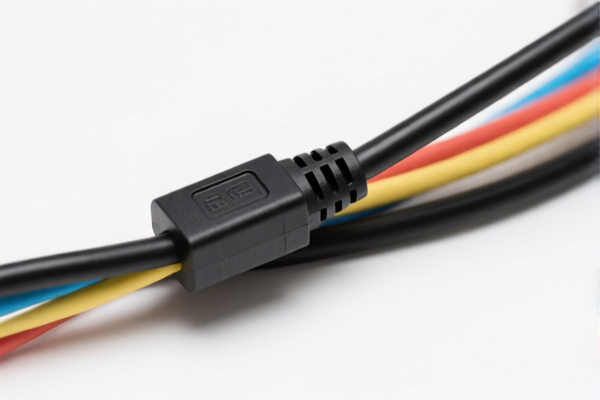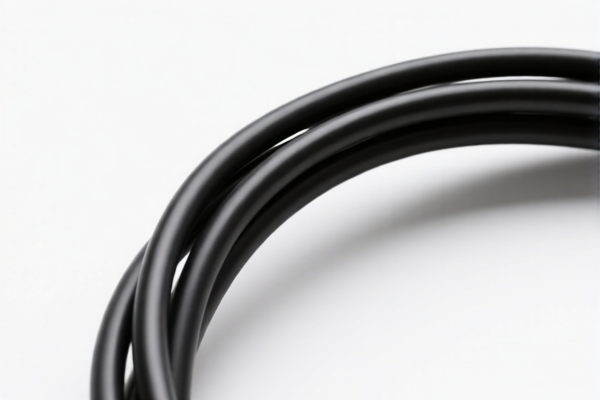| HS Code | Official Doc | Tariff Rate | Origin | Destination | Effective Date |
|---|---|---|---|---|---|
| 8544190000 | Doc | 58.9% | CN | US | 2025-05-12 |
| 9001100030 | Doc | 61.7% | CN | US | 2025-05-12 |
| 9001100075 | Doc | 61.7% | CN | US | 2025-05-12 |




Separate Cable
A separate cable, broadly defined, refers to a distinct physical link used to connect devices for data or power transmission, as opposed to integrated or wireless connections. These cables are fundamental components in numerous electronic systems, facilitating communication and energy transfer.
Material
Separate cables are constructed from a variety of materials, selected based on the intended application and performance requirements. Common materials include:
- Conductors: Typically copper or aluminum, chosen for their electrical conductivity. Copper is more prevalent due to its superior performance, though aluminum is lighter and less expensive. Silver is used in high-performance applications, but is costly.
- Insulation: Plastics like PVC (Polyvinyl Chloride), polyethylene, Teflon (PTFE), or rubber are used to isolate conductors and prevent short circuits. The choice depends on voltage, temperature, and flexibility requirements.
- Shielding: Metallic braids or foils (aluminum or copper) are often incorporated to reduce electromagnetic interference (EMI) and radio frequency interference (RFI).
- Jacketing: An outer layer of plastic or rubber provides physical protection and environmental resistance.
- Connectors: Made from metals like nickel, gold, or brass, connectors establish the physical interface between the cable and the devices. Gold plating is common for improved conductivity and corrosion resistance.
Purpose
The primary purpose of separate cables is to establish a reliable and dedicated connection for:
- Data Transfer: Transmitting digital or analog signals between devices (e.g., computers, peripherals, network equipment).
- Power Delivery: Supplying electrical power to devices.
- Signal Transmission: Carrying audio, video, or other types of signals.
Function
The function of a separate cable is determined by its internal construction and the signals it is designed to carry. Key functional aspects include:
- Conductivity: Efficiently transferring electrical signals with minimal loss.
- Impedance Matching: Maintaining consistent impedance throughout the cable to prevent signal reflections.
- Shielding: Protecting signals from external interference.
- Bandwidth: Supporting a specific range of frequencies for data transmission.
- Power Capacity: Handling a certain amount of electrical current.
Usage Scenarios
Separate cables are ubiquitous in modern technology, found in a wide range of applications:
- Computer Peripherals: Connecting mice, keyboards, monitors, printers, and external storage devices.
- Networking: Ethernet cables (Cat5e, Cat6, etc.) for connecting computers and network devices.
- Audio/Video Equipment: HDMI, DisplayPort, USB-C, optical cables for transmitting audio and video signals.
- Power Supplies: Power cables for connecting devices to electrical outlets.
- Industrial Automation: Cables for connecting sensors, actuators, and control systems.
- Telecommunications: Fiber optic cables for high-speed data transmission.
Common Types
A diverse range of separate cable types exists, each optimized for specific applications:
- USB (Universal Serial Bus): A versatile standard for data transfer and power delivery (USB-A, USB-B, USB-C, Micro-USB, Mini-USB).
- HDMI (High-Definition Multimedia Interface): For transmitting high-definition audio and video signals.
- Ethernet Cables (Cat5e, Cat6, Cat6a, Cat7): For network communication.
- DisplayPort: Another interface for transmitting high-resolution audio and video.
- Optical Cables (Fiber Optic): For high-speed data transmission using light signals.
- Power Cables (IEC C13, NEMA 5-15): For connecting devices to electrical power sources.
- Audio Cables (RCA, XLR, TRS): For transmitting audio signals.
- Serial Cables (RS-232): Older standard for connecting devices, still used in some industrial applications.
- Parallel Cables (IEEE 1284): Older standard for connecting printers, largely replaced by USB.
- Coaxial Cables (RG-6, RG-59): For transmitting radio frequency signals.
The declared goods, “separate cable”, can be classified under the following HS codes based on the provided information:
-
8544190000: This HS code covers insulated (including enameled or anodized) wire, cable (including coaxial cable) and other insulated electric conductors, whether or not fitted with connectors; optical fiber cables, made up of individually sheathed fibers, whether or not assembled with electric conductors or fitted with connectors: Winding wire: Other. This is applicable if the “separate cable” is an insulated electric conductor, potentially used for winding or other electrical applications. The basic tariff is 3.9%, with an additional 25.0% tariff, increasing to 30.0% after April 2, 2025, resulting in a total tariff of 58.9%.
-
9001100030: This HS code covers optical fibers and optical fiber bundles; optical fiber cables other than those of heading 8544; sheets and plates of polarizing material; lenses (including contact lenses), prisms, mirrors and other optical elements, of any material, unmounted, other than such elements of glass not optically worked: Optical fibers, optical fiber bundles and cables Optical fibers: For transmission of voice, data or video communications. This applies if the “separate cable” is an optical fiber specifically designed for communication purposes. The basic tariff is 6.7%, with an additional 25.0% tariff, increasing to 30.0% after April 2, 2025, resulting in a total tariff of 61.7%.
-
9001100075: This HS code covers optical fibers and optical fiber bundles; optical fiber cables other than those of heading 8544; sheets and plates of polarizing material; lenses (including contact lenses), prisms, mirrors and other optical elements, of any material, unmounted, other than such elements of glass not optically worked: Optical fibers, optical fiber bundles and cables Optical fiber bundles and cables: Plastic optical fiber bundles and cables. This applies if the “separate cable” is a plastic optical fiber bundle or cable. The basic tariff is 6.7%, with an additional 25.0% tariff, increasing to 30.0% after April 2, 2025, resulting in a total tariff of 61.7%.
HS Code Breakdown:
- 8544: Covers insulated conductors and associated products.
- 190000: Specifically refers to winding wire and other insulated conductors.
- 9001: Covers optical fibers, bundles, and cables.
- 100030: Specifically refers to optical fibers for communication.
- 100075: Specifically refers to plastic optical fiber bundles and cables.
Customer Reviews
No reviews yet.